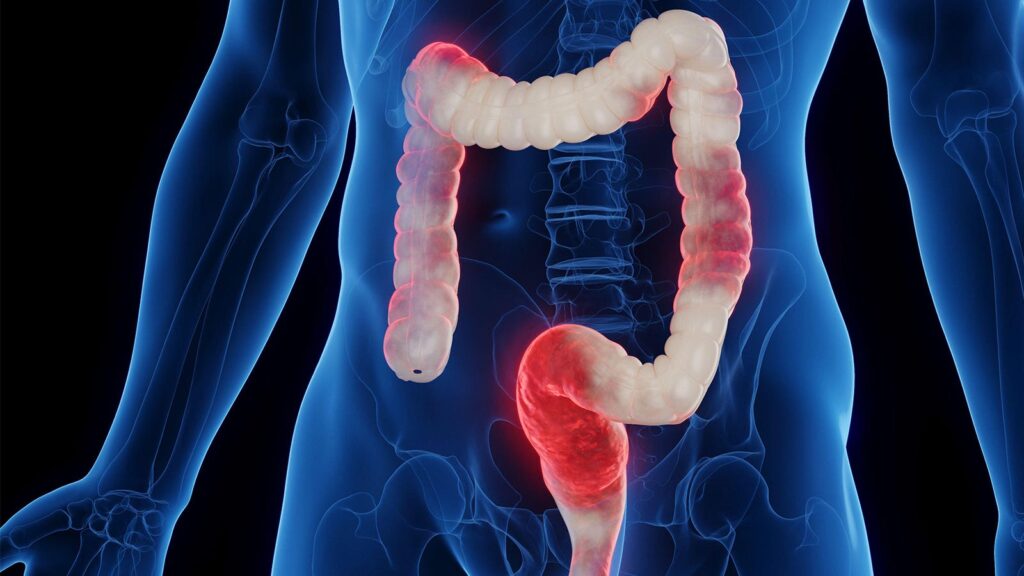Titrated low-dose amitriptyline significantly improved irritable bowel syndrome (IBS) symptoms when used as a second-line treatment in the primary care setting, the randomized ATLANTIS trial showed.
In an intention-to-treat analysis, there was a significant mean difference in IBS Severity Scoring System (IBS-SSS) score between patients who received the tricyclic antidepressant and those who received placebo at 6 months (-27.0, 95% CI -46.9 to -7.1, P=0.0079), reported Alexander C. Ford, MD, of the University of Leeds in England, and colleagues.
As for a key secondary outcome, there were also increased odds of Subjective Global Assessment (SGA) of relief of symptoms with amitriptyline versus placebo (OR 1.78, 95% CI 1.19-2.66, P=0.0050), they noted in The Lancet. The difference in mean change in IBS-SSS score was also significant at 3 months (-23.3, 95% CI -42.0 to -4.6, P=0.014), as was SGA of relief of IBS symptoms (OR 1.70, 95% CI 1.15-2.53, P=0.0080).
Amitriptyline was also better than placebo for adequate relief of IBS symptoms, with an increased odds of adequate relief across all weeks during the 6 months (OR 1.56, 95% CI 1.20-2.03, P=0.0008), as well as an increased proportion of participants reporting relief for 50% of weeks over the 6 months (41% vs 30%).
“Amitriptyline was more effective than placebo across a range of IBS symptom measures, and was safe and well tolerated, when titrated according to symptom response and side effects,” Ford and team wrote. “General practitioners should offer low-dose amitriptyline to patients with IBS in whom first-line therapies are ineffective, with appropriate support to guide patient-led dose titration.”
IBS is often treated in primary care practices, alongside first-line diet and lifestyle changes, but low-dose tricyclic antidepressants like amitriptyline are not used frequently in this setting, despite psychotropic drugs and selective serotonin reuptake inhibitors having shown effectiveness as second-line treatment for IBS, the authors noted. However, they are recommended as a second-line treatment in guidance from the U.K.’s National Institute for Health and Care Excellence.
In an accompanying editorial, Niek de Wit, MD, PhD, and Daniel Keszthelyi, MD, PhD, of UMC Utrecht and Maastricht UMC, respectively, in the Netherlands, noted that the study’s results show the strength of placebo in patients with IBS.
“Although this placebo response might be partially related to the high frequent contact with research and practice staff during the trial, it underlines the potential power of adequate patient-doctor communication and the limited additional benefit of active drug therapy,” they wrote.
However, “the results of the ATLANTIS trial are robust and consistent, and demonstrate that a low-dose tricyclic antidepressant can be effectively and safely applied for patients with IBS in primary care, as an option, not as standard treatment,” they concluded. “Optimal IBS management requires a personalized approach, with treatment steps dependent on the type of IBS symptoms, disease history, treatment response in the past, and sensitivity to side effects.”
They also pointed out that “the results of this trial suggest that the effectiveness of low-dose tricyclic antidepressants in IBS is not related to antidepressant or anxiolytic activity, but rather to an effect on gut sensitivity and pain modulation.”
“Perhaps it is therefore more sensible to begin to refer to tricyclic antidepressants in the context of IBS as neuromodulators, rather than as antidepressants. This could help mitigate certain negative perceptions and facilitate therapeutic conversations,” they wrote.
The double-blind ATLANTIS study enrolled adults with any subtype of IBS and ongoing symptoms (IBS-SSS score ≥75 points) from 55 general practices in England. All had been unsuccessful with first-line treatments for IBS, such as changes in diet and lifestyle, including adding more soluble fiber to the diet, and antispasmodics, laxatives, or antidiarrheals.
From October 2019 to April 2022, Ford and team randomized 463 patients (mean age 48.5, 68% women) to receive either low-dose oral amitriptyline 10 mg once daily or placebo, with 338 completing 6 months of treatment. The single daily dose of amitriptyline was titrated up to 30 mg, depending on symptoms and tolerability.
Of the patients, 20% discontinued low-dose amitriptyline, 13% due to adverse events, and 26% discontinued placebo, with 9% due to adverse events, before 6 months. Adverse events with amitriptyline included dry mouth, drowsiness, blurred vision, and urination problems. However, less than 5% of these adverse reactions were severe.
Disclosures
The ATLANTIS study was funded by the U.K.’s National Institute for Health and Care Research (NIHR) Health Technology Assessment Program.
Ford and some co-authors reported NIHR grant funding paid to their institutions. Co-authors also reported other relationships with government entities and foundations.
The editorialists reported unrestricted grants from ZonMw, Dutch Digestive Disease Foundation, Cancer UK, Dutch Cancer Society, and Preventis. Keszthelyi reported grants from ZonMw, Dutch Digestive Disease Foundation, Rome Foundation, Horizon 2020, Horizon Europe, Allergan, and Grunenthal.
Primary Source
The Lancet
Source Reference: Ford AC, et al “Amitriptyline at low-dose and titrated for irritable bowel syndrome as second-line treatment in primary care (ATLANTIS): a randomised, double-blind, placebo-controlled, phase 3 trial” Lancet 2023; DOI: 10.1016/S0140-6736(23)01523-4.
Secondary Source
The Lancet
Source Reference: de Wit N, Keszthelyi D “Low-dose amitriptyline in irritable bowel syndrome: ready for primary care? Lancet 2023; DOI: 10.1016/S0140-6736(23)01725-7.
Please enable JavaScript to view the

